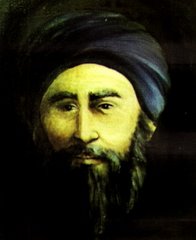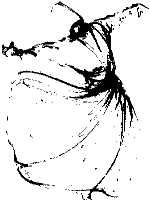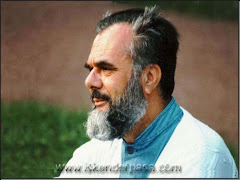

... a place where Irf injects some much needed spice and chilli in discussions about Muslims.
Flippant Thoughts on this Friday's Youth Summit
This Friday, young Muslims from across Australia will be gathering in Sydney for the inaugural National Muslim Youth Summit. They will discuss a range of issues affecting young Aussie Muslims. These issues include drug & alcohol addiction, family crises, the Anti-Terrorism Bill and Muslim coverage in the media.
You’d think such a summit would be organised by a peak Muslim body such as the Australian Federation of Islamic Councils. Think again. This talkfest is being financed by the Department of Immigration Multicultural & Indigenous Affairs (DIMIA). It is being organised by a non-Muslim NGO called the Australian Multicultural Foundation.
Around two-thirds of Australian Muslims are aged under 40 and were born in Australia. Many Muslim communities – Turks, Bosnians, Albanians, Afghans and Lebanese – are into their 3rd and 4th generation. They have high levels of education and employment and integrate well in mainstream Australian society.
Yet the very fact that AFIC and other Muslim bodies have never organised a Muslim youth summit is indicative of how out-of-touch these migrant-dominated peak bodies are. It also explains why they find it so hard to send the right signals to the broader community understandably seeking some kind of reassurance that the London bombings will not be replicated in Australia.
When asked if any single event changed his perceptions toward national security, Prime Minister John Howard spoke of the London terrorist attacks of 7 July 2005. What made the London attacks so different was that the alleged perpetrators were not foreign terrorists but local boys. The phrase “home grown terror” became part of our vocabulary.
And it wasn’t just in Australia that the shockwaves were felt. Across the Tasman, at least 4 mosques were vandalised in different parts of New Zealand.
Within hours, a small group of grassroots Muslim organisations led by the Islamic Council of Victoria condemned the attacks unconditionally. These organisations had one thing in common – they were managed by Australian-born Muslims who knew how to engage with the Australian mainstream and could address the legitimate concerns Australians of all faiths and no faith in particular held on national security issues.
However, other Muslim peak bodies were much slower in their condemnation. It took the Australian Federation of Islamic Councils around 3 weeks to issue an open letter signed by its president and its mufti (chief imam) to various Muslim groups and associations. The letter made mention not just of the terror attacks but also of the alleged grievances of those carrying out many attacks. A similar letter and with similar timing was issued by the Islamic Council of NSW.
The conditional nature of the condemnations and their delayed release led to suggestions that Australian Muslims would only condemn terrorism when embarrassed into doing so, and only on a conditional basis. The suggestions were, of course, unfair but understandable. What Muslim bodies did not realise was that their management of Muslim affairs was now regarded as a national security issue.
The most recent raids and arrests conducted by ASIO and police raised even more questions about Muslim community management. The majority of those arrested were young men born and brought up in Australia. A number of these men were known to attend youth groups managed by imams and volunteers deemed to be more “radical”.
This naturally led many commentators to ask certain questions. What attracts many local Muslim youth to attend such classes and become part of such groups? Why aren’t mainstream mosques attracting more young people? What facilities and programs are being run by mainstream imams? Are mainstream imams equipped to provide programs to younger home-grown Muslims?
One troubling aspect of Muslim community leadership is that it has not yet figured out exactly who or what it represents. Both AFIC and its New Zealand equivalent (the Federation of Islamic Associations of NZ or FIANZ) are umbrella bodies representing mainly societies responsible for the management of mosques.
At least in Australia, the majority of mosques are divided along ethnic and linguistic lines, and leadership is dominated firmly by first generation middle-aged migrant men with an interest in maintaining the ethnic divisions. The leadership tends to regard mosques and religious activities as cultural artefacts which run parallel to their cultural perception of Islam.
The mosque associations tend to employ imams who fulfil a cultural role. As such, the imams of different mosques will perform different cultural roles depending on the dominant cultural group of the association. Most Friday sermons and other lectures are given in Arabic and another language (usually not English).
Indeed, most sermons being given this Friday will also tend to be in a language most young Muslims will not understand. The inability of mainstream Muslim institutions will be just one of the topics to be addressed this Friday at the National Muslim Youth Summit in Sydney.
Delegates will be divided into 6 subgroups and will brainstorm a number of the issues selected. The summit is perhaps the first time young people across the ethnic and linguistic spectrum of Muslim Australia will be able to discuss and pass on their concerns to the Australian Government.
One would have expected the topics discussed at the summit would form part and parcel of the deliberations and decision making of these bodies. The inability of peak Muslim bodies to involve and engage the youthful Muslim majority will ensure these institutions will become irrelevant in the Australian Muslim landscape. The fact that a government agency and a non-Muslim NGO are taking this initiative is yet another indication of how hopelessly out-of-touch the migrant and middle aged male dominated Muslim leadership is with the community it claims to represent.


A Message To Imams Across Australia, New Zealand & The WorldWords © 2005-11 Irfan Yusuf
25 November 2005 falls on a Friday, the day regarded as sacred to Muslims. On this day, Muslims gather at the mosque to pray in congregation. Part of that process includes the delivery of a sermon or “khutbah”.
The Prophet Muhammad has provided guidelines for the delivery of sermons. One od these guidelines is that the khatib (the one who delivers the sermon) is to deal with current issues facing the Muslim community.
Although I am no scholar, I have a humble suggestion for our imams and khatibs for a topic which affects all Muslims, especially Muslim men. I also have a humble request for our imams and khatibs to wear a certain item with their clothing.
The United Nations has designated 25 November to be the International Day for the Elimination of Violence Against Women. As part of this day, men wear white ribbons on their chests as a symbol that they will not commit, condone or tolerate any forms of violence against women carried out by other men.
I urge our imams and khatibs to wear a white ribbon on that day, and to encourage the male members of their congregation to also wear the white ribbon.
Islam gave dignity to women. It gave women rights and liberties. But some men, Muslim and non-Muslim, choose to take those rights away. Moreover, some men choose to act violently toward women.
Our greatest exemplar in conduct was the Prophet Muhammad. There is no instance of him ever behaving violently toward a woman. He never engaged in physical or sexual violence toward any women, be they his wives, his daughters or women outside his family.
The Prophet Muhammad brought a scripture which states that husbands and wives are like “garments unto each other”. Which man would rip up or punch or kick his garments?
The Prophet is reported to have said: “The best of you is he who is best to his wife. And I am the best amongst you because of my behaviour with my wife.”
The measure of a man is how he treats his wife. Yet we all know that Muslim men do exist who beat and act violently toward their wives. Often such violence is carried out in the presence of children, or at least comes to the knowledge of the children.
When violence against women is perpetrated in the home, it isn’t just the women victims who suffer. The children are traumatised, and this can last even after they reach maturity. Other men who care for the woman victim – fathers, brothers etc – also suffer.
Indeed, even the perpetrator of the violence suffers. He loses respect of his children. He is increasingly unable to control the anger or other causes of the violence. Most importantly, he eventually loses the woman who could have offered him unconditional love.
Society as a whole loses. And we are losing. Our women are suffering physical and sexual violence at the hands of their husbands and other men. We know it is happening. But many of us come from cultures where domestic violence is hidden.
In Australia and other Western countries, there are laws which forbid domestic violence and which provide women with remedies against the perpetrators. Similar laws exist in Muslim countries.
Yet it troubles me that when I visit a court located in an area of Sydney with a substantial Muslim community, I see names like “Ali” and “Muhammad” and “Umar” and “Abdullah” figuring prominently on the court list as perpetrators of violence toward their female partners.
It also troubles me that I see so many women with names like “Aisha” and “Khadija” and “Yasmin” and “Fatima” as victims.
Women make up at least 50% of the Muslim population, and at least 50% of the human race. Violence against women is condemned across all faiths and schools of thought. So why is it on the increase?
This is not just an issue for Muslims. It is eating at the soul of mankind. We know that God is “ar-Rahman” (absolutely gracious) and “ar-Rahim” (absolutely merciful). We know that these two primary attributes of God come from the root word “Rahm” which means “the womb”.
God uses the example of the female womb to describe His own absolutely mercy. Yet instead of respecting the wombs that carried us, we see women being subject to the worst forms of physical, mental, sexual and emotional violence in our communities. We even see fathers and brothers perpetrating violence for the sake of protecting family honour.
Yet the most honourable and best of men is the one who is best to his wife. This is the standard set for us by our Prophet. It is the standard we have failed.
The Prophet said: “Help your brother, both when he is oppressed and when he oppresses.” Those hearing asked: “How do we help someone when he oppresses?” The Prophet responded: “By stopping him from his oppression.”
Muslim men need to stop their Muslim brothers who deem it acceptable to oppress their wives and other women. The violence against women will only stop when men take a stand. If Muslim men sit by and not stop the evil from occurring, we might as well be lending a hand to the violence.
I humbly call upon all imams and khatibs to deliver this message to the men in their congregations on 25 November 2005.


Here we go again. The integration mass debate has been started by politicians too gutless and/or stupid to deal with harder questions of economics. Pointing fingers at others without realising three fingers are pointing back at them.
Once again the pseudo-intellectual monoculturalists are coming out of the closet, dusting off the attitudes that have been used for over two centuries in Australia. One of my recent favourites has been a line from an editorial published by that American-owned newspaper the calls itself The Australian.
How wonderful it would be if the next generation of [Muslim] Lebanese-Australian kids held as their models the successful chief executives and footballers from their communities, rather than drug barons and night club owners.




I am "far-right" the way Geert Wilders ... is(Comment on a book review I wrote for The Australian. Mate, you said it. Who am I to argue with you?)
... I can see why Irfan Yusuf got the 2007 Allen & Unwin Iremonger
award for public affairs writing: he's slick.

A nasty attack by an Australian blogger named Irfan Yusuf has appeared(From an update on Mr Pipes' blog dated 21 February 2008. No, Mr Pipes, I would never jump on you. I just don't find you physically attractive!)
... Yusuf jumps on me ...

... should send a signal to responsible media everywhere to decline his tendentious writings.(I wonder if, by "responsible", he means that tiny fringe of newspapers and websites happy to print his claims that Barack Obama is a Muslim apostate and attended a madressa? Or that wearing a sarong is "a garment associated with Muslims"? Or that extremists make up 10-15% of the Muslim world population? Well, Mr Pipes, I wouldn't want to pollute my reputation by writing for those kinds of media. You can have them all, mate!)



